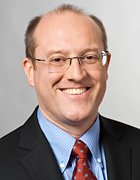
Information Theory for a Few Models inspired by Optical Fiber Communication
Abstract
Fiber optic channels are a complex medium with frequency dependent nonlinearity, dispersion, loss, amplification, and noise. We develop information theory for three simplified models that we hope provides useful insight on realistic models. The first model is used to compute information rates for optically-routed networks. Although the results are old by now (developed in 2006), they provide essentially the best rates to date. The second model assumes bandlimited propagation, and it lets us develop a capacity upper bound that is tight at power levels that are usually present in today’s systems. The third model is dispersion-free, and we use it to motivate studying the standard filter-and-sample model of communication theory.
Biography
Gerhard Kramer is Alexander von Humboldt Professor and Chair of Communications Engineering at the Technical University of Munich (TUM). He received the B.Sc. and M.Sc. degrees in electrical engineering from the University of Manitoba, Canada, in 1991 and 1992, respectively, and the Dr. sc. techn. degree from the ETH Zurich, Switzerland, in 1998. From 1998 to 2000, he was with Endora Tech AG in Basel, Switzerland, and from 2000 to 2008 he was with the Math Center at Bell Labs in Murray Hill, NJ. He joined the University of Southern California (USC), Los Angeles, CA, as a Professor of Electrical Engineering in 2009. He joined TUM in 2010. Gerhard Kramer’s research interests are primarily in information theory and communications theory, with applications to wireless, copper, and optical fiber networks.